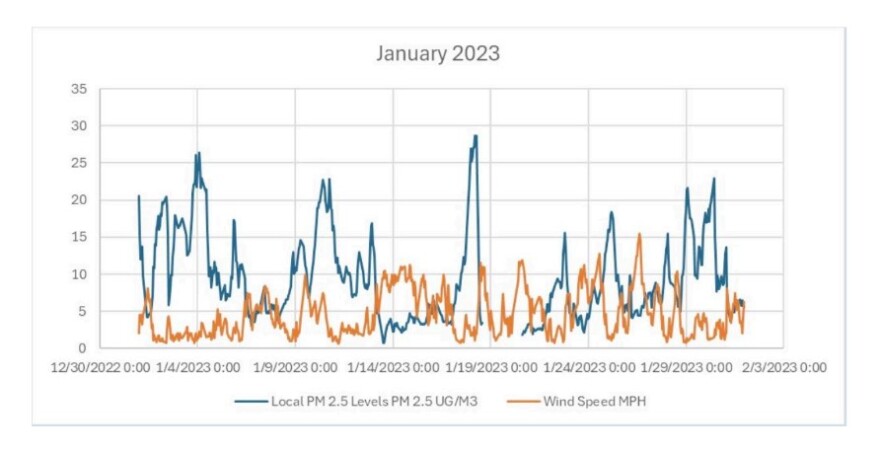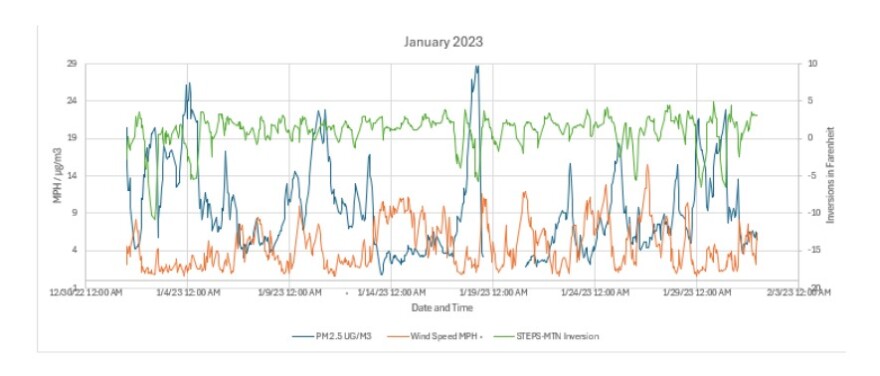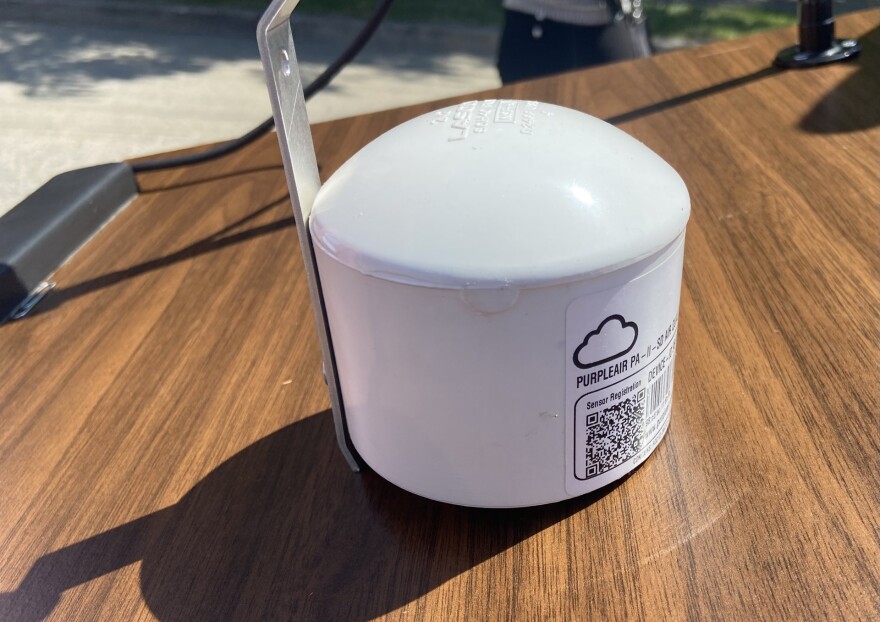BETHLEHEM, Pa. — A broad range of meteorological factors, including temperature inversions and wind speed, can affect concentrations of fine particle pollution in the Lehigh Valley, according to Lehigh University researchers.
“When wind speed is higher, it tends to disperse PM 2.5 pollution more quickly, so higher wind speed is associated with lower levels of PM 2.5 pollution,” according to the May update of Lehigh Valley Breathes, the region’s year-long air monitoring project, posted online. “ … Lower air quality (higher pollution levels) is associated with the co-occurrence of temperature inversions (warmer air layered on top of colder air) and low wind speed.
“While low wind speed appears to have a bigger impact on PM2.5 pollution levels than temperature inversions, temperature inversions are likely to exacerbate the effect of low wind speed.”
The findings were shared this month by officials behind the Valley’s $100,000 monitoring project, Lehigh Valley Breathes. Announced last August, it aims to monitor air quality amid emissions from the region’s prolific trucking and warehousing industry. As part of the effort, 40 PurpleAir monitors are slated to be installed; so far, 27 of the 33 monitors installed appear on the Shiny App, the project’s online dashboard.
As we develop a better understanding of how PM 2.5 pollution is distributed in the Lehigh Valley using the LVBreathes air monitors, this research on wind speed and temperature inversions will help us to distinguish the role that traffic plays in creating localized air pollution problems.Lehigh Valley Breathes May 2024 update
While monitoring continues, Lehigh Valley Breathes officials used the most recent project update to explain results from the research this spring at Lehigh. Similarly, the April update focused on the Environmental Protection Agency’s new soot pollution standards.
“As we develop a better understanding of how PM 2.5 pollution is distributed in the Lehigh Valley using the LVBreathes air monitors, this research on wind speed and temperature inversions will help us to distinguish the role that traffic plays in creating localized air pollution problems,” according to the update.
‘The data is helpful’
Ben Felzer, a Lehigh University professor, and Jeremy Mack, a data specialist, worked with two undergraduate students, Lizzie Hayes and Olympia Ransom, to study how meteorological variables affect PM 2.5 pollution across the region.
PM 2.5 are particles so small that they’re invisible to the naked eye, but are made up of a mix of chemicals that can get deep into the lungs and can cause health problems.
“Using data from the Pennsylvania Department of Environmental Protection’s (DEP’s) centralized air monitor, which precedes the start of the LVBreathes Project, the students looked at the impact of wind speed and temperature inversions on PM2.5 pollution during different months of 2023,” according to the update.
Wind speed is known to impact pollution, officials said. When wind speed is higher, it tends to disperse PM 2.5 pollution more quickly, so higher wind speed is associated with lower levels of PM 2.5 pollution.

Looking at wind speeds from January 2023, researchers found PM 2.5 pollution occurs when the wind speeds are low, and conversely, when wind speeds are high, PM 2.5 pollution levels are low.
In addition to wind speed, temperature inversions — when a warm layer of air traps colder air near the ground — can also affect PM 2.5 pollution.
When researchers charted temperature inversions for the same month, they found those inversions “often occur at the same time as higher PM2.5 levels, such that the peaks of the blue lines and valleys of the green lines often seem to be reaching out to each other.”

“The Lehigh students’ preliminary study of temperature inversions is limited because they relied on temperature data from currently available stationary sensors located at different heights, as opposed to temperature gages suspended in the air by balloons at specified locations,” officials said. “Nonetheless, the data is helpful in identifying the broad range of factors shaping PM 2.5 pollution.”
For more information, visit the Lehigh County or Northampton County website for Lehigh Valley Breathes.


